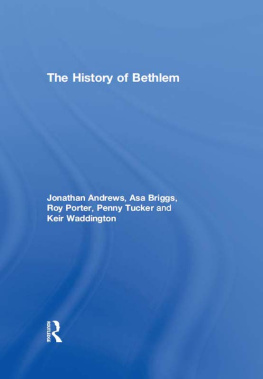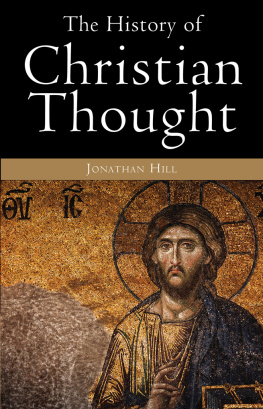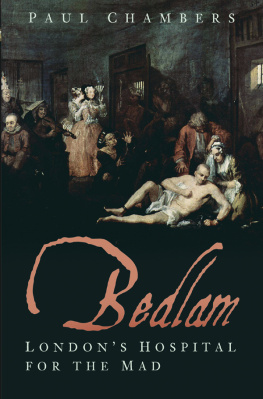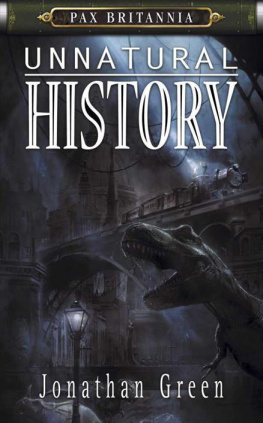THE HISTORY OF BETHLEM
Stunning. At last Bethlem has the comprehensive history it deserves, firmly grounded in a wider social and political context. With a deft touch the authors have unpicked the tapestry of myth and misconception surrounding Bethlem, to reveal the intricate twists and turns of its various existences. Psychiatric historiography has been considerably enriched.
Nick Hervey, co-author of Masters of Bedlam, The Transformation of the Mad-Doctoring Trade
Bethlem Hospital is a unique institution. Now seven hundred and fifty years old, it has been continuously involved in the care of the mentally ill since at least 1400 as such it has a strong claim to be the oldest foundation in Europe with an unbroken history of sheltering and treating the mentally disturbed. The History of Bethlem is a scholarly history of this key establishment, looking at Bethlem's role within the caring institutions of London and Britain and its place in the history of psychiatry.
Bethlem is not simply Europe's oldest psychiatric establishment; it is the most famous and the most notorious, assuming many guises over its 750-year history. It began as a religious foundation in the context of the Crusades. It became a hospital for the insane by chance, survived complex battles between Crown and Papacy, Parliament and the Corporation of the City of London, and gained great prominence for many years as Britain's only lunatic hospital.
The name of Bethlem turned into everyday speech and became part of a national culture. From Shakespeare's time, Bedlam was becoming detached from the institution and assuming a life and a persona of its own, with connotations of turmoil, confusion and cacophony.
Bethlem transcended locality and became a national and international institution. Based upon a full use of the Bethlem archives, The History of Bethlem is a long overdue re-evaluation of its history. This comprehensive volume explores Bethlem in the context of the history of Britain, London, hospitals and psychiatry.
The authors are Jonathan Andrews, Lecturer in the History of Medicine at Oxford Brookes University; Asa Briggs, Emeritus Professor of History and Vice-Chancellor of the University of Sussex; Roy Porter, Professor in the Social History of Medicine, The Wellcome Institute, London; Penelope Tucker, Research Fellow, the Wellcome Institute, London and Keir Waddington, Research Fellow, Queen Mary & Westfield College.
THE HISTORY OF BETHLEM
Jonathan Andrews, Asa Briggs, Roy Porter; Penny Tucker and Keir Waddington
First published 1997
by Routledge
2 Park Square, Milton Park, Abingdon, Oxon OX14 4RN
Simultaneously published in the U SA and Canada
by Roudedge
711 Third Avenue, New York, NY 10017
Routledge is an imprint of the Taylor & Francis Group, an informa business
1997 Jonathan Andrews, Asa Briggs, Roy Porter, Penny Tucker and Keir Waddington
Chapter 15 copyright 1997 Christine Stevenson
Typeset in Garam ond by
RefineCatch Limited, Bungay, Suffolk
All rights reserved. No part of this book may be reprinted or reproduced or utilized in any form or by any electronic, mechanical, or other means, now known or hereafter invented, including photocopying and recording, or in any information storage or retrieval system, without permission in writing from the publishers.
British Library Cataloguing in Publication Data
A catalogue record for this book is available from the British Library
Library of Congress Cataloging in Publication Data
The history of Bethlem / Jonathan Andrews [et al.].
Includes bibliographical references and index,
i . Bethlem Royal Hospital (London, England) History.
2. Psychiatric hospitalsEnglandLondonHistory. 1. Andrews,
Jonathan, 1961.
[DNLM : 1. Bethlem Royal Hospital (London, England) 2. Hospitals,
PsychiatrichistoryEngland. WM 28 FE5 1997]
RC450.G72L728 1997
| 362.21 09421DC21 | 9652471 |
| DNLM /DLC | CIP |
ISBN 0415017734
CONTENTS
The architecture of Bethlem at Moorfields
Christine Stevenson |
ACKNOWLEDGEMENTS
Rather like the story of Bethlem itself, the history of this history of Bethlem is lengthy and complex, and this is not the place to tell its tale; suffice to say that the team of authors are collectively deeply grateful to all we have dealt with at Bethlem and the Maudsley for their eager cooperation, patience, tolerance and understanding. Special thanks must go to Eric Byers, the Chief Executive, for his help in making facilities and materials available; and to Miss Patricia Allderidge, the Archivist, for her unrivalled expertise and her unflagging enthusiasm for Bethlem, its history and its archives.
The staffs of many libraries and other institutions have been exceedingly helpful. We would like to make special mention of all those who have helped us at the Guildhall, the Public Record Office (both Chancery Lane and Kew), the Corporation of London Record Office, the Greater London Record Office and the British Library. While the authors have made every effort to contact copyright holders of material used in this volume, they would be grateful to hear from any they were unable to contact.
Penny Tucker would particularly like to thank the following for comment, advice, or for allowing advance sight of articles: Drs Caroline Barron, Sandra Cavallo, John Clark, Natsu Hattori, Peregrine Horden, Derek Keene, Marie-Anne Kinselbach, Carole Rawcliffe, David Roffe, Christina Vanja, Nicholas Vincent; for making drawings, Caroline Overy; and Ms Ellie Phillips.
Jonathan Andrews extends his special thanks to Dr F. J. G. Jefferiss, Matthew Craske, Rosemary Weinstein, Len Smith, Akihito Suzuki and Helen Bradley and many others whose comments and suggestions proved very helpful.
Keir Waddington is grateful to many. In researching the twentieth-century history of Bethlem, invaluable help on the 1930 buildings has been provided by Kaye Bag-shaw of the RIBA. Jennifer Haynes offered careful guidance through the Foulkes and Sargant papers at CMAC, Wellcome Institute, and the staff of the Wellcome Institute Library, British Library and the Greater London Record Office have proved helpful and supportive.
Asa Briggs would like to thank L. H. W. Paine for his earlier commitment to and interest in the writing of Bethlem's history. In addition, thanks are due to Peter Bartiett, Abigail Beach, W. F. Bynum, Ann Dally, Martin Daunton, Anne Digby, Anne Hardy, Juliet Hum, Cheryce Kramer, Caroline Overy, Frank Prochaska, Andrew Scull, Trevor Turner and David Wright for their useful comments and reading of the text. A debt is also owed to all those who agreed to be interviewed for this book, a list too long to mention.





















